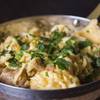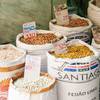General
Transport
People
Accomodation
Food & Drink
 What is the local food like in Portugal?
What is the local food like in Portugal?
 How much does the food cost?
How much does the food cost?
 What are some places to eat?
What are some places to eat?
 What can I eat in Portugal as a vegetarian?
What can I eat in Portugal as a vegetarian?
 Can I drink tap water in Portugal?
Can I drink tap water in Portugal?
 What soft drinks are available?
What soft drinks are available?
 Is there a coffee and tea culture in Portugal?
Is there a coffee and tea culture in Portugal?
 What alcoholic drinks to try while in Portugal?
What alcoholic drinks to try while in Portugal?
 What are the restrictions regarding alcohol consumption?
What are the restrictions regarding alcohol consumption?
 Where to buy alcohol in Portugal and how much does it cost?
Where to buy alcohol in Portugal and how much does it cost?
Sightseeing
Legal
Money
Safety & Health
Family travel

What local dishes to try in Portugal?
Cataplana de marisco. Originating in Algarve, cataplana de marisco is a seafood feast. The dish gets its name from the copper pan it’s cooked in – a cataplana, a pan with two rounded sides connected by a hinge that opens and closes like a clam – where onions, garlic and tomatoes are stewed with glugs of white wine, clams, whole prawns and coins of chorizo.
Sardinhas assadas. A platter of freshly grilled sardines (sardinhas assadas) is typical comfort food in Portugal. Often found as a main attraction at summer festivals across the country, the sardines are roasted whole on an open-fire grill and simply seasoned with a sprinkling of coarse sea salt. Once smoky and charred, the small fish are removed from the fire and served as they are – bones and heads intact. Do as the Portuguese do and eat them whole. It’s crispy on the outside, revealing wonderfully flaky white meat on the inside.
Cozido à portuguesa. Cozido à portuguesa – sometimes referred to as a Portuguese boiled dinner – is a traditional stew. Although the ingredients often change, depending on which part of Portugal it’s prepared in, it’s essentially a platter of slowly boiled meats, sausages and vegetables. In northeast Portugal, cozido overflows with farinheira (breaded sausage), morcela (blood sausage) and alheira (sausage filled with a mixture of game and bread), while in the south, cozido can be found with chicken, lamb, potato and mint.
Arroz de tamboril. Tamboril is Portuguese for monkfish, and while it’s not as popular as bacalhau (cod), it’s just as ubiquitous in the country’s cuisine. You’ll find chunks of flaky white fish stirred into a tomato stew peppered with garlic, laurel and rice, which soaks up the excess moisture. It’s similar to risotto and most often found in coastal towns around the country.
Peixinhos da horta. Although Portuguese cuisine is heavy on meat and seafood, peixinhos da horta is a mainstay vegetarian recipe. Literally meaning ‘little fish from the garden’, peixinhos da horta are just that: vegetables yanked from the ground, breaded and fried until crispy and golden brown, resulting in a finished product that resembles small, colourful fish. The traditional vegetable is green beans, but squash and peppers are also subbed in on occasion.
Sopa de cação. Hailing from Alentejo, this bright green soup gets its colour from coriander, and is a verdant broth studded with garlic, pieces of dogfish shark, lemon, bay leaves, paprika and vinegar. The soup is commonly paired with broa, a Portuguese bread milled from cornflour.
Feijoada. Feijoada is a bean stew tossed with beef and pork. It makes sense that this soul-soothing comfort food is served during Portugal’s cool and rainy winters. In the rural region of Trás-os-Montes, this means a colourful stew of red and white beans studded with hunks of pork (sometimes including the ears and snout), sausages and lightly fried vegetables and spiced with cumin, cloves, garlic and paprika. Some versions cooked near the water substitute meat with whelk (sea snails).
Sopa da pedra. Sopa da pedra – ‘stone soup’ – comes piping hot with its own legend. According to Portuguese folklore, a homeless monk had nothing to eat, so rather than go hungry, he cleaned a stone and boiled it in water. As villagers passed him by, they each felt sorry for him and added something to brighten his meal: a few potatoes, some hunks of meat, a bag of beans. The soup slowly morphed from a poor man’s stew into a veritable feast. Once it finished cooking, the monk removed the stone and invited the villagers to join him for a meal. The story is still told today and has a distinct moral – the importance of sharing – and the soup, as in the story, can be prepared with a myriad of ingredients and shared among friends.
Alheira de Mirandela. Alheira is a kind of sausage mixed with bread and meat – typically made without pork, which several centuries ago was uncommon. This was because when Jewish people were expelled from Portugal in the 15th century, those who chose to remain had to convert to Christianity. But many converted without actually changing their beliefs and their diets remained the same, which meant avoiding pork. In order to convince other people they had converted, people would hang non-kosher-looking sausages in their houses – sausages that masqueraded as pork products, but were actually made from a mix of cow, game and bread. Nowadays, alheiras are roasted or grilled and flanked by a mound of French fries and a fried egg.
Bacalhau. In just about every Portuguese restaurant, travellers can find bacalhau (dried and salted cod). The traditional dish comes with its own nickname – ‘the faithful friend’ – and the Portuguese are quick to remind you there are more ways to prepare bacalhau than there are days of the year. You can find it as bacalhau à brás, a mound of tiny fried potatoes, cod, onions and scrambled eggs; or you can tuck into bacalhau com todos, a plate of boiled cod and vegetables and sliced hard-boiled eggs.
Caldeirada de enguias. The coastal town of Aveiro is famed for fishing eel. Chefs here are known to whip up caldeirada de enguias, an eel stew brightened with saffron and ribbons of bell pepper, onions and potatoes. It’s most often accompanied by a glass of crisp white wine to bring out the flavours of the eel and vegetables.
Francesinha. The signature sandwich of Porto, francesinha is built out of two thick slices of bread crammed with meat (usually steak, ham, sausage or chorizo), slathered with melted cheese and a spicy tomato sauce and occasionally crowned with a gooey fried egg. The sandwich is quite similar to the French croque-monsieur. Like a croque-monsieur, a francesinha is usually accompanied by a mountain of fries.
Pastéis de nata. Perhaps Portugal’s most adored pastry, the pastéis de nata is a pint-size egg custard tart. Puff pastry is jammed with a yellow custard whisked with egg yolks, sugar, cream and a dash of lemon zest and baked until golden. At Pastéis de Belém, a bakery that’s been in operation since 1837 in Lisbon, lines curl out of the bakery with visitors waiting for one thing: the famed pastéis de nata. Guests can shower each pastry with their choice of powdered sugar or cinnamon; they are eaten for breakfast, as a snack or dessert.
Posta mirandesa. Posta mirandesa is Portugal’s answer to the French chateaubriand steak and Italy’s fiorentina steak. This Portuguese meat arrives from free-range Mirandesa calves, sourced directly from Trás-os-Montes, the only region where the breed is found. The thick tenderloin is grilled over a fire, and flanked by sliced potatoes and sautéed greens.

Am I expected to tip in Portugal?

What alcoholic drinks to try while in Portugal?

How do I use ATMs in Portugal?

What can I bring home from Portugal?

Is Portugal safe to visit?
